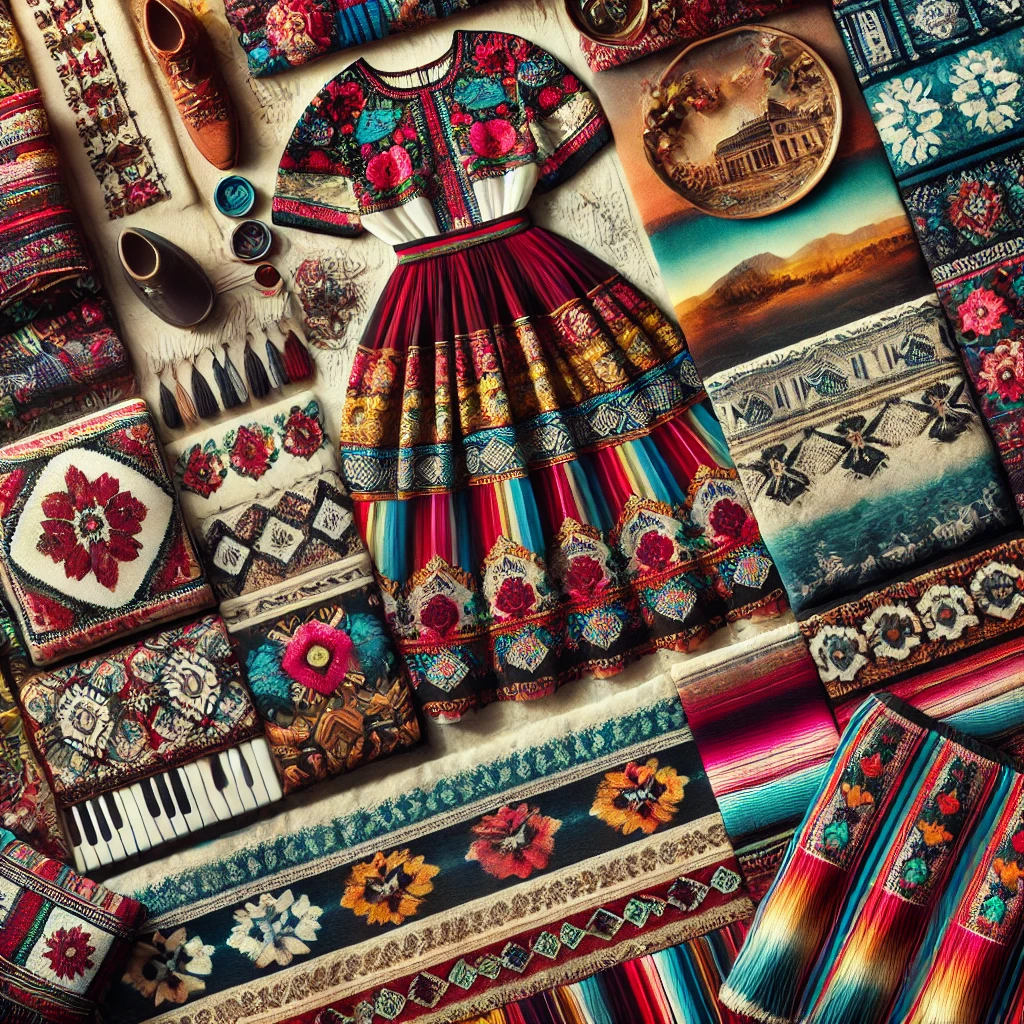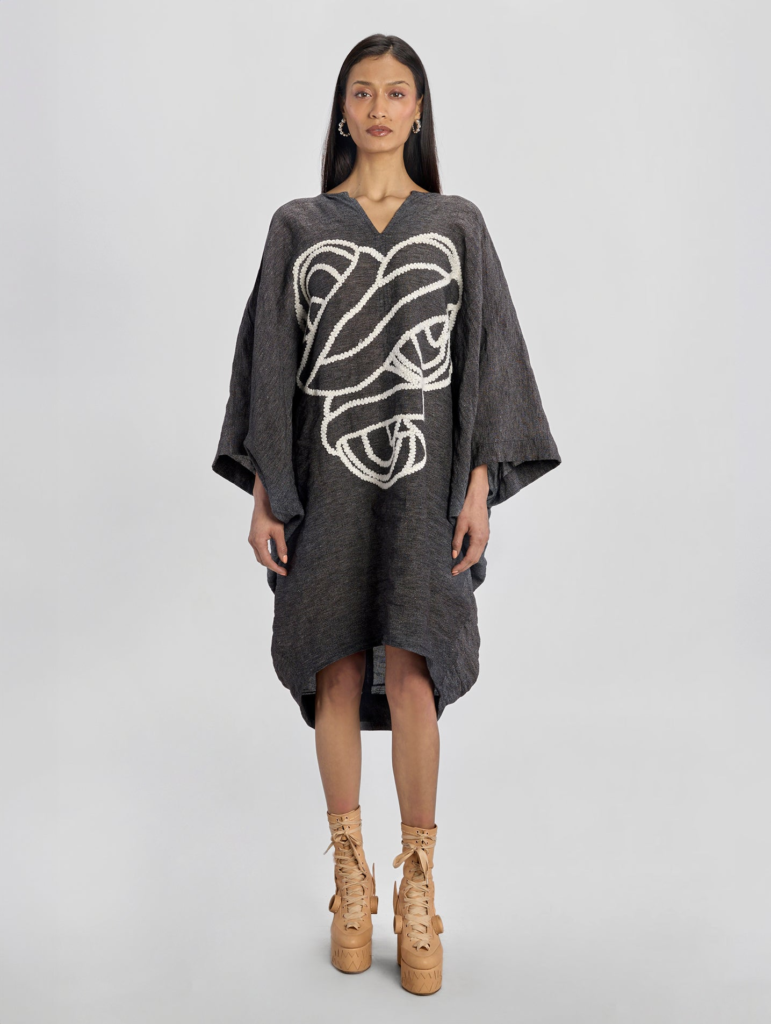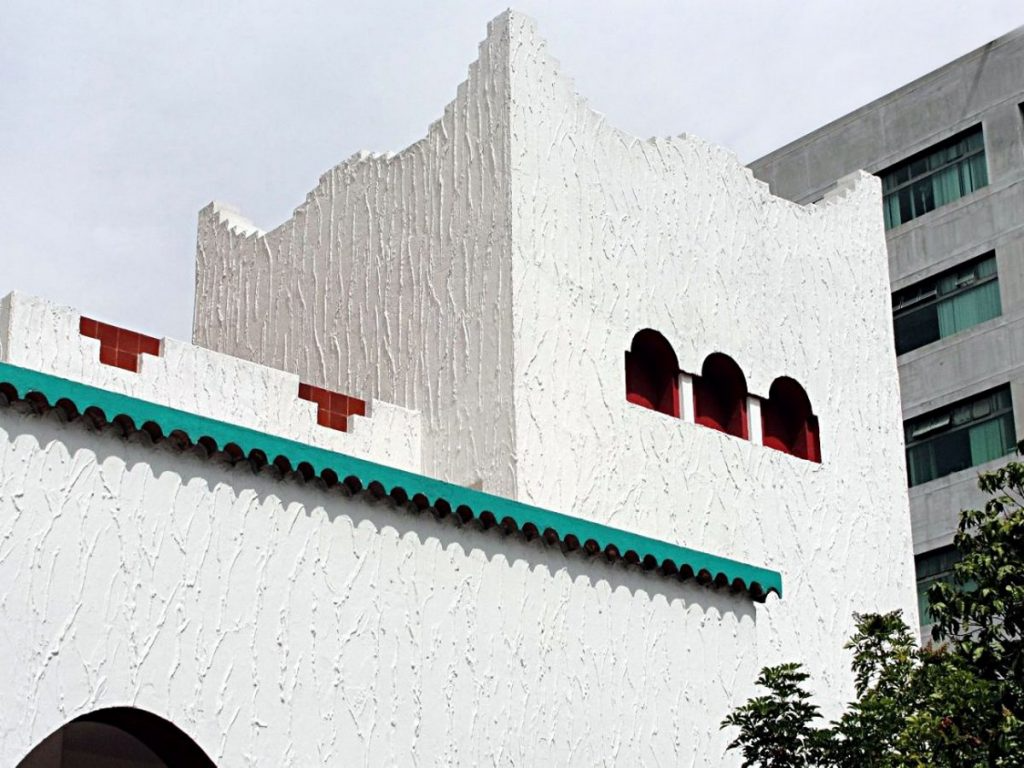Table of Contents
Introduction to Mexico’s Fashion Heritage
Mexico boasts a rich and diverse fashion heritage that reflects its complex history and cultural influences. From ancient indigenous practices to colonial intermingling, the evolution of clothing in Mexico encapsulates the essence of its people and regions. The traditional dress of Mexico is not merely a representation of aesthetics; it embodies stories, beliefs, and identities, often weaving together narratives of sociopolitical realities across centuries.
Indigenous cultures, which have inhabited Mexico for millennia, laid the foundational fabric of what we recognize today as Mexican fashion. Each ethnic group, such as the Zapotecs, Mixtecs, and Maya, has contributed unique textiles, patterns, and techniques that are intrinsic to their identity. For instance, the vibrant huipil—a traditional garment worn by women—serves not only as attire but also as a canvas displaying cultural symbols and personal narratives. The use of natural dyes and elaborate embroidery techniques passed down through generations highlights the deep-rooted craftsmanship inherent in Mexican textiles.

The colonial period introduced new materials and styles that further diversified Mexico’s fashion landscape. Spanish influences intertwined with indigenous textiles, aspiring to create a unique synthesis that led to the development of distinctive garments. The influences of European baroque styles can be appreciated in the intricate lacework and bold colors of traditional clothing, a union that speaks to the adaptive resilience of Mexican artisans. As historical events unfolded, such as the Mexican Revolution, clothing became a form of resistance and expression, symbolizing unity and cultural pride among communities.
Today, Mexico’s fashion scene continues to thrive as contemporary designers draw inspiration from traditional textiles while infusing modern sensibilities. This blend of old and new not only honors Mexico’s rich heritage but also promotes sustainability and cultural appreciation, ensuring that the vibrant fabric of Mexico’s fashion continues to evolve.
Traditional Textiles and Their Cultural Significance
Mexico is renowned for its rich tapestry of traditional textiles, which serve not only as clothing and home decor but also as profound expressions of cultural identity. Among the most iconic of these textiles are rebozos, embroidered blouses, and woven rugs, each with unique techniques and regional significance. The rebozo, often regarded as a symbol of Mexican womanhood, is a versatile shawl that can be worn in various ways. It is typically crafted using techniques such as loom weaving, with intricate patterns that reflect the artisan’s heritage.
Embroidered blouses, known as “blusas bordadas,” are another important element of Mexico’s textiles. These garments showcase vibrant colors and complex stitch patterns that vary by region, conveying messages about the wearer’s origins and social status. For example, blouses from the state of Oaxaca often feature floral motifs, while those from Chiapas incorporate geometric designs. The embroidery techniques used in these garments, including thread-wrapping and cross-stitching, are often passed down through generations, preserving community traditions and skills.
Woven rugs, or “tapetes,” represent an additional significant textile form that highlights regional characteristics. Crafted on traditional looms, these rugs showcase rich colors and intricate designs that often depict local flora, fauna, and cultural symbols. The town of Teotitlán del Valle, in Oaxaca, is renowned for its high-quality wool rugs, which are dyed using natural materials sourced from the surrounding environment. The symbolism behind the patterns and colors used in these textiles often carries deep meanings rooted in indigenous beliefs and practices.
Ultimately, the traditional textiles of Mexico embody a vast cultural heritage, reinforcing collective identities while also reflecting individual craftsmanship. As these pieces are appreciated both locally and internationally, their significance continues to evolve, fostering a growing appreciation for the artistry inherent in Mexico’s vibrant fashion scene.
Prominent Indigenous Fashion Influences
Mexico boasts a rich tapestry of indigenous cultures, each contributing unique styles and traditions to the country’s vibrant fashion scene. Among the most notable groups are the Zapotecs, Mixtecs, and Purepechas, whose diverse textile techniques and designs have left an indelible mark on the nation’s heritage. The vibrant colors, intricate patterns, and unique craftsmanship typical of these communities reflect their cultural identity and history.
Zapotec weavers, for instance, are renowned for their sophisticated techniques in creating Oaxaca’s famed rugs and traditional garments. Utilizing backstrap looms, they produce textiles that are not only visually stunning but also carry profound cultural significance. Likewise, the Mixtec community is celebrated for its use of natural dyes and elaborate embroidery, which adorn traditional clothing items such as blouses and shawls. These distinctive features have found new life as contemporary designers seek to reinvent and incorporate indigenous styles into modern fashion.
Recent years have witnessed a renaissance of indigenous fashion, as designers increasingly draw inspiration from traditional garments. This movement is not merely a trend but a crucial effort to preserve ancient techniques and honor the artisans who create them. Brands such as Pineda Covalin and Águila Sabia exemplify this approach, effectively bridging the gap between traditional craftsmanship and modern aesthetics. By integrating indigenous motifs and materials into their collections, they promote the rich heritage of Mexico while responding to contemporary consumer demands.
Moreover, this revival stimulates economic opportunities for indigenous communities, empowering artisans and encouraging cultural exchange. As the fashion industry continues to evolve, the integration of these influences stands testament to the enduring legacy of indigenous craftsmanship and its vital role in shaping Mexico’s modern fashion landscape. In conclusion, the contributions of indigenous communities to Mexico’s fashion scene highlight the importance of preserving cultural heritage while paving the way for innovative designs.
Contemporary Mexican Designers to Watch
In recent years, Mexican fashion has gained significant recognition on both national and international stages, led by an array of contemporary designers who blend traditional craftsmanship with modern aesthetics. These designers are noteworthy for their unique styles and innovative approaches that not only reflect Mexico’s rich culture but also challenge and redefine global fashion norms.
One such designer is Carla Fernández, whose work embraces indigenous traditions while integrating sustainable practices. Her collections often feature locally sourced textiles and handwoven techniques, celebrating Mexico’s indigenous heritage. By collaborating with artisans from various communities, Fernández not only preserves traditional craftsmanship but also empowers these local artisans through fair trade initiatives, creating a fashion narrative that is both contemporary and culturally rooted.
Another influential figure is Jorge Ayala, known for his avant-garde silhouettes and commitment to sustainability. Ayala’s designs often showcase a fusion of bold colors and intricate patterns that draw inspiration from Mexico’s vibrant landscapes and traditions. His ability to reinterpret classic motifs into modern wearable art positions him as a key player in contemporary fashion, encouraging a discourse on sustainability within the industry.
On a different note, the designer Oaxaquena, Aída Coronado, utilizes the traditional art of embroidery to create pieces that resonate with cultural storytelling. Her collections are characterized by intricate embroidery and vivid colors that reflect the diversity of Mexico’s textiles, while also appealing to modern sensibilities. Coronado’s work serves as a bridge between the past and present, illustrating how traditional craftsmanship can remain relevant in today’s fast-paced fashion environment.
These contemporary designers exemplify how Mexican fashion is evolving, driven by a blend of tradition and innovation. As they make waves on the global stage, their contributions not only elevate Mexican fashion but also inspire a wider return to ethical and sustainable fashion practices.
Fashion Weeks and Major Events in Mexico
Mexico’s fashion scene has witnessed a vibrant evolution, notably through various fashion weeks and significant events designed to spotlight local talent and creativity. Among these, Mexico City Fashion Week (MDFW) holds a prominent position, functioning as a key platform that showcases both established and emerging designers. Since its inception, MDFW has played a crucial role in presenting innovative collections, making it a cornerstone for trends that resonate not only within the country but also on an international scale.
MDFW typically occurs biannually, featuring runways filled with an array of fashion styles that reflect Mexico’s rich cultural heritage fused with modern aesthetics. Designers from diverse backgrounds participate, displaying eclectic collections that range from high-end couture to contemporary streetwear. The event not only attracts fashion enthusiasts but also industry insiders and international buyers, thereby establishing connections that can lead to global opportunities for local brands.
In addition to MDFW, several regional fashion showcases are gaining traction throughout Mexico. Events in cities like Guadalajara, Monterrey, and Mérida contribute significantly to the overall landscape, promoting localization and sustainability in fashion. These regional platforms provide emerging designers with the opportunity to present their work, gain publicity, and connect with potential customers. They also foster a sense of community within the fashion industry, encouraging collaboration and innovation amongst designers.
Moreover, these major events often include workshops, panels, and networking opportunities, further supporting the growth of Mexico’s fashion industry. Local artisans and craftspeople are frequently highlighted at these gatherings, which not only elevates their work but also encourages the integration of traditional textiles and techniques into modern designs. Such initiatives ensure the richness of Mexican culture continues to thrive amidst the fast-paced evolution of contemporary fashion.
Sustainability in Mexican Fashion
In recent years, sustainability has emerged as a significant focus within Mexico’s fashion industry. Designers and brands alike have increasingly adopted eco-friendly practices, recognizing the critical need to align fashion with environmental responsibility. This movement is not merely a trend, but rather a substantial shift towards creating more sustainable systems that respect both the planet and the rich cultural heritage embedded in Mexican craftsmanship.
Many Mexican designers are committed to utilizing eco-friendly materials in their collections. Organic cotton, recycled fabrics, and natural dyes have become popular choices for those who seek to minimize their environmental impact. By sourcing materials locally, these designers contribute to the reduction of carbon footprints and foster local economies. This approach promotes a circular economy within the fashion sector, which is essential for sustainable development.
Ethical manufacturing processes are another cornerstone of the sustainability movement in Mexican fashion. Designers are increasingly prioritizing fair labor practices and transparent supply chains, ensuring that artisans and workers are compensated fairly and work in safe conditions. This commitment to ethical production not only enhances the quality of the garments but also helps to preserve the traditional techniques that have been passed down through generations. It is vital that contemporary fashion does not overshadow these artisanal skills but instead elevates and celebrates them.
Moreover, the importance of preserving traditional craftsmanship cannot be overstated. Mexican artisans possess an invaluable wealth of knowledge that contributes to the unique identity of the country’s fashion landscape. As the industry embraces sustainability, it is essential to find a balance between innovation and heritage. This harmonious integration ensures that the vibrant textiles and designs characteristic of Mexico continue to thrive amidst changing consumer preferences and environmental challenges.
The Role of Fashion in Mexican Identity
Fashion in Mexico is much more than an aesthetic consideration; it is a vital medium for cultural expression and identity. The clothing choices of individuals often mirror the social narratives and values held by various communities across the nation. Traditional garments such as the rebozo and huipil serve not only as functional attire but also as representations of regional pride, history, and craftsmanship. These textiles often embody local artistry and have been passed down through generations, reflecting a deep connection to heritage and cultural roots.
Throughout Mexican history, fashion has played a significant role in political narratives and social movements. For instance, during the Mexican Revolution, certain styles became symbols of resistance and empowerment. The adoption of specific attire, including the iconic sombrero by revolutionary leaders, allows individuals to convey their political beliefs, illustrating the powerful relationship between fashion and national identity. Additionally, contemporary fashion designers often draw inspiration from traditional patterns, colors, and silhouettes, thereby creating a dialogue between past and present. This fusion highlights the ongoing evolution of cultural identity within modern Mexican society.
The everyday lives of Mexicans are also reflected in their fashion choices. From urban streetwear to traditional attire, clothing serves as a canvas for personal storytelling and community representation. Many individuals curate their wardrobes to express socio-economic status, cultural allegiance, or unique individuality, thus contributing to the broader tapestry of Mexican identity. In this way, fashion becomes a reflection of lived experiences and collective memory, allowing people to articulate their backgrounds and aspirations.
In conclusion, the interplay between fashion and Mexican identity is multifaceted, encompassing traditional heritage, social movements, and individual expression. As the landscape of Mexican fashion continues to evolve, it remains an essential element of national identity, shaping and reshaping cultural narratives for generations to come.
Global Influence of Mexican Fashion
In recent years, the global fashion landscape has increasingly embraced Mexican fashion, marking a significant shift toward recognizing the country’s rich cultural heritage and innovative designs. This evolution is evident in the collaborations between prominent Mexican designers and international brands, which not only showcase the unique aesthetics of Mexican textiles but also enhance their visibility on global platforms. Notable designers such as Carla Fernández and Luis Barragán have partnered with luxury brands, creating collections that blend traditional craftsmanship with modern sensibilities. This fusion of styles has led to an appreciation for the artistry inherent in Mexican fashion and demonstrates how global influence can stem from local expertise.
The representation of Mexican fashion in international markets and media further underscores its growing importance. Fashion weeks in major cities, such as New York and Paris, now feature collections by Mexican designers, drawing attention to the country’s creative talent and diverse influences. Influencers and celebrities often don garments created by Mexican artisans, amplifying the reach and desirability of these designs. Such representations not only celebrate Mexico’s vibrant fashion scene but also encourage dialogues surrounding sustainability and ethical practices within the industry, aligning with the global shift towards conscious consumption.
Additionally, platforms like Instagram and fashion blogs have become vital in promoting Mexican fashion to an international audience. As brands leverage social media, they can share stories about the origins of their textiles and the significance of traditional techniques, fostering a deeper understanding of Mexican culture through fashion. This narrative approach not only captivates fashion enthusiasts but also establishes an emotional connection with consumers, ultimately fostering loyalty and support. As we continue to witness the global influence of Mexican fashion, it becomes increasingly evident that this dynamic and culturally rich industry is here to stay, leaving an indelible mark on the world stage.
Conclusion: The Future of Fashion in Mexico
The future of fashion in Mexico is poised for a dynamic transformation as it continues to evolve by intertwining traditional elements with contemporary innovation. As the world becomes increasingly interconnected, Mexican fashion designers are recognizing the importance of celebrating their rich heritage while adapting to global trends. This blend of old and new serves not only to preserve cultural significance but also to provide a unique perspective on modern fashion.
Emphasizing inclusivity is another essential aspect that will shape the trajectory of Mexico’s fashion industry. Designers are now actively exploring diverse representations and narratives that reflect the country’s multicultural identity. This shift encourages participation from various communities, ultimately enriching the fashion landscape with a multitude of perspectives and ideas. By valuing this inclusivity, Mexican fashion has the potential to become a significant player on the global stage, showcasing a vibrant array of styles that resonate with a broad audience.

Moreover, the focus on sustainability is becoming increasingly crucial. Many designers and brands are adopting eco-friendly practices, such as utilizing organic materials and supporting local artisans, to create garments that are both stylish and responsible. This commitment to sustainability not only reflects a growing awareness of environmental issues but also resonates with consumers who prioritize ethical choices in their purchasing decisions.
In conclusion, the future of Mexico’s fashion scene is bright, characterized by a thoughtful balance of tradition and modernity, inclusivity, and sustainability. As designers continue to innovate while honoring their roots, Mexico is well-positioned to inspire and captivate audiences globally. The ongoing evolution of this vibrant fashion culture will ultimately shape not only the domestic market but also leave an indelible mark internationally.








